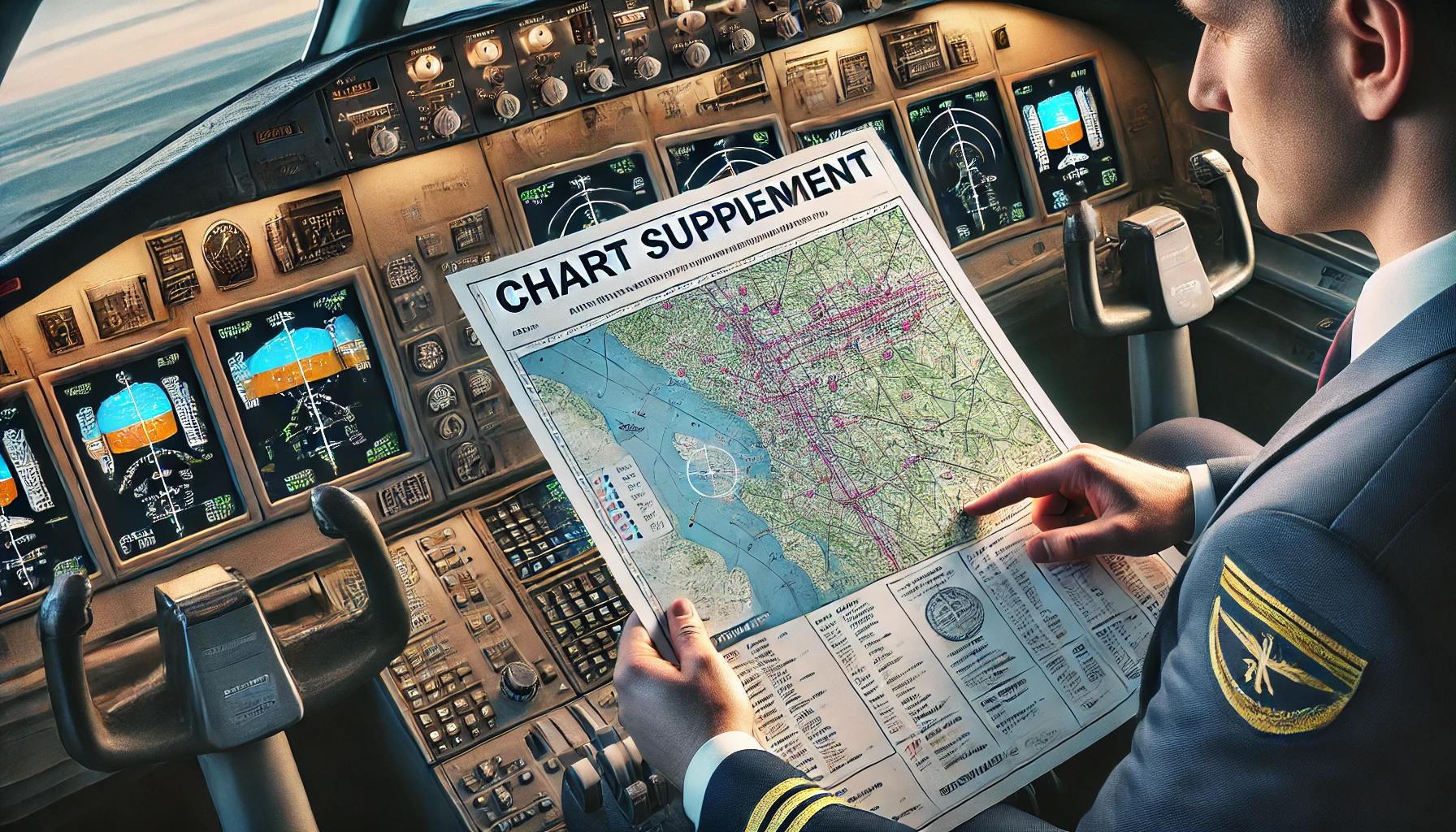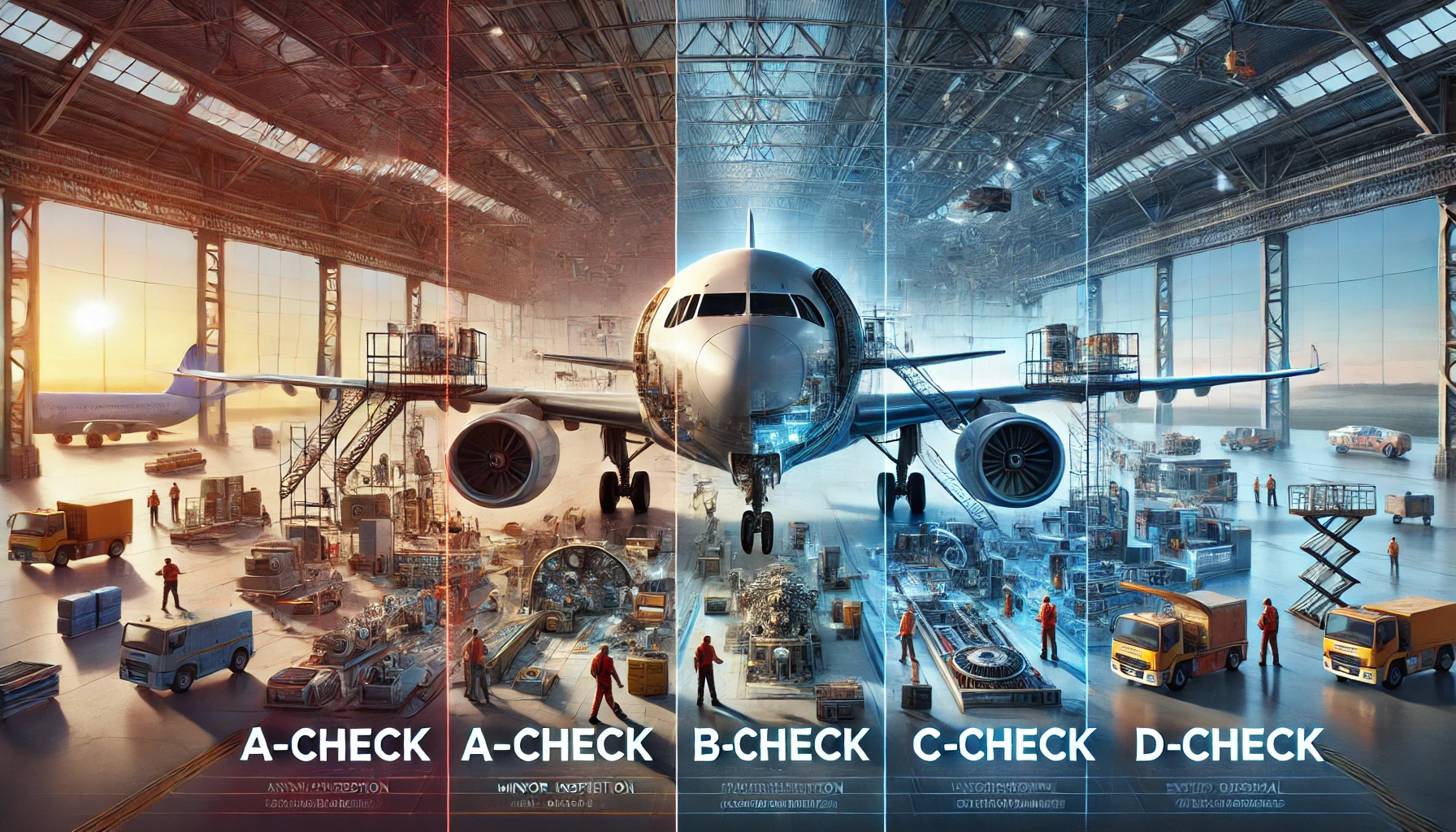Navigating the vast expanse of our skies can be as thrilling as it is complex, especially when it comes to understanding airspace classifications. Among them, Class C airspace stands out as a crucial zone where pilots must be both informed and vigilant. Whether you’re a budding aviator eager to solo or an experienced flyer brushing up on your knowledge, grasping the rules governing this dynamic airspace is essential for safe and efficient flight operations.
In this blog post, we’ll break down the key regulations you need to know about Class C airspace—arming you with insights that will enhance your flying experience while ensuring compliance with aviation standards.
Buckle up as we take off into the intricacies of Class C airspace!
Introduction to Class C Airspace
Class C airspace surrounds busy airports where both commercial and private aircraft operate frequently. As such, understanding how to interact within this environment can not only enhance your flight experience but also ensure the safety of everyone in the vicinity. From communication protocols to weather requirements, there’s a lot to cover.
What is Class C Airspace?
Class C airspace is a type of controlled airspace that surrounds busy airports. It extends vertically from the surface up to 4,000 feet above ground level. This space ensures safe and efficient operations for both commercial and general aviation.
Typically, Class C airspace encompasses an inner core and an outer shelf area. The inner core provides closer protection around the airport, while the outer shelf serves as a transition zone for incoming and outgoing flights.
Pilots must communicate with Air Traffic Control (ATC) when entering this space. ATC provides instructions to manage aircraft movement effectively, enhancing safety in crowded skies.
Understanding Class C airspace is crucial for pilots operating near major airports. Knowledge about its dimensions and operational requirements helps prevent conflicts between various types of aircraft.
Purpose and Function of Class C Airspace
Class C airspace plays a vital role in managing aircraft operations around busy airports. Its primary purpose is to ensure safety and efficiency for both incoming and outgoing flights.
This type of airspace typically surrounds major airports, where pilot traffic can be intense. By designating this zone, aviation authorities can maintain organized flight patterns.
Within Class C airspace, Air Traffic Control (ATC) oversees communications between pilots and controllers. This constant interaction helps prevent mid-air collisions, especially when multiple aircraft are approaching or departing simultaneously.
Additionally, Class C facilitates the seamless flow of information regarding weather conditions and potential hazards. Pilots stay informed while navigating through crowded skies.
Ultimately, Class C serves as a structured environment that balances accessibility with safety measures crucial for all aviators entering its boundaries.
Key Rules and Regulations for Operating in Class C Airspace
When flying in Class C airspace, understanding the rules is crucial for safety. Communication with Air Traffic Control (ATC) is paramount. Pilots must establish two-way radio contact before entering this controlled space.
Next, aircraft must meet specific equipment standards. This includes having a transponder with Mode C capability and an operable altitude reporting system to ensure accurate positioning.
Traffic patterns are another key aspect. Familiarity with standard procedures helps pilots navigate safely within busy environments.
Weather minimums also play a significant role. VFR pilots need to maintain visibility of at least three statute miles, along with other altitude requirements based on cloud cover.
Lastly, special considerations exist for VFR operations in Class C areas. Being proactive about situational awareness can make all the difference when transitioning through these bustling skies.
Communication requirements with ATC
Communication with Air Traffic Control (ATC) in Class C airspace is essential for maintaining safety and order. Pilots must establish two-way radio communication before entering this airspace.
Approaching the boundary, it’s important to contact ATC on the designated frequency. This ensures that controllers can provide traffic advisories and instructions tailored to your flight path.
Once you’re in touch, be prepared to follow their directives closely. ATC may assign you a specific altitude or route, which helps manage the flow of aircraft within busy areas.
Clear communication is key. Use standard phraseology for efficiency and clarity while avoiding jargon that might confuse controllers or other pilots.
Remember, effective dialogue not only enhances your safety but contributes to an organized airspace system where everyone plays a vital role.
Equipment requirements for aircraft
When flying in Class C airspace, your aircraft must meet specific equipment requirements. This ensures safe operation within busy environments.
Firstly, a transponder with altitude reporting capabilities is mandatory. This allows Air Traffic Control (ATC) to locate and track your aircraft effectively.
Additionally, two-way radio communication systems are essential. These enable pilots to communicate directly with ATC for instructions and traffic advisories.
Furthermore, while not always required, having an ADS-B Out system can enhance situational awareness. It broadcasts your position to other aircraft and ATC.
Lastly, ensure you have reliable navigation tools on board. GPS or electronic flight bags can assist in maintaining the correct course amidst potential congestion in the skies above busy terminals.
Traffic pattern procedures
Traffic pattern procedures in Class C airspace are crucial for maintaining order and safety. When approaching an airport with a control tower, pilots should always follow established patterns to ensure smooth operations.
Typically, the traffic pattern consists of a rectangular course around the runway. Pilots must enter this pattern at a designated altitude and align themselves correctly based on their approach direction.
Standard entry points often include downwind, base leg, and final approach segments. Each segment serves as a guideline for transitioning safely between phases of landing or takeoff.
Moreover, it’s important to maintain proper separation from other aircraft while adhering to published altitude restrictions. Awareness of surrounding traffic is essential; communication with Air Traffic Control (ATC) can help mitigate misunderstandings during busy periods.
Always remember that adapting your flying techniques to local operational standards enhances both safety and efficiency within Class C airspace environments.
Weather minimums
Weather minimums in Class C airspace are crucial for ensuring the safety of all pilots. These minimums help determine when Visual Flight Rules (VFR) operations can safely take place.
Typically, VFR pilots must maintain a visibility of at least three statute miles. This is essential for avoiding obstacles and other aircraft during flight. Additionally, they need to stay clear of clouds, with specific distance requirements that vary based on cloud type.
When flying within Class C areas, it’s important to note that these weather conditions can change rapidly. Pilots should always check current weather reports before departure and be prepared for sudden shifts in visibility or cloud cover.
Maintaining awareness about local weather patterns also aids decision-making while navigating through busy airspace. Understanding these factors contributes significantly to overall situational awareness and enhances flight safety in crowded environments.
Special considerations for VFR pilots
VFR pilots navigating Class C airspace need to be especially vigilant. It’s crucial to maintain situational awareness at all times. This means knowing your altitude, position, and the location of nearby aircraft.
Communication with Air Traffic Control (ATC) is essential. You must establish two-way radio contact before entering this airspace. Be prepared for instructions that may change as traffic flow varies throughout the day.
It’s also important to understand the specific traffic patterns used in Class C areas. Familiarizing yourself with local standard operating procedures can help you anticipate ATC expectations.
Weather conditions are another factor for VFR pilots. Minimum visibility requirements apply here, so always check weather reports prior to flight.
Lastly, keep an eye out for transient operations or special events that might affect normal flying activities within Class C zones. Being adaptable enhances safety and efficiency during your flights.
Unique Features of Class C Airspace
Class C airspace stands out due to its distinct operational structure. One of its most notable features is the presence of control towers. These towers play a crucial role in maintaining safety and efficiency, guiding aircraft during takeoffs and landings.
Transition areas are another key characteristic. They serve as zones where pilots can safely enter or exit Class C airspace while remaining aware of surrounding traffic. This gradual transition helps prevent conflicts with other aircraft.
Shelf areas also define Class C airspace, extending horizontally from the ground up to a specified altitude. These layers help manage the flow of both VFR (Visual Flight Rules) and IFR (Instrument Flight Rules) traffic, ensuring that operations coexist smoothly within busy airspaces.
Understanding these unique features enhances situational awareness and promotes safer flying practices in this complex environment.
Control tower operations
Control towers play a vital role in Class C airspace. They manage all aircraft operations within their designated area, ensuring safety and efficiency.
When you enter Class C airspace, expect to communicate with the tower directly. Air traffic controllers provide essential instructions for takeoffs, landings, and while navigating through the busy skies. This constant communication helps prevent collisions and maintains an orderly flow of traffic.
The control tower operates primarily during peak hours when flight activity is high. Pilots must adhere strictly to instructions given by the controllers. Any deviation can lead to dangerous situations.
Being aware of your surroundings is crucial when flying in this environment. Controllers rely on pilots to maintain situational awareness as they juggle multiple aircraft simultaneously.
Understanding how control towers function enhances safety and improves overall navigation within Class C airspace.
Transition areas
Transition areas in Class C airspace play a crucial role for pilots navigating through busy skies. These regions serve as buffer zones, bridging the gap between controlled and uncontrolled airspaces.
When entering a transition area, pilots must adhere to specific altitude levels and communication protocols with Air Traffic Control (ATC). This ensures that all aircraft can safely coexist while maintaining efficient traffic flow.
Pilots transitioning into or out of these areas should be particularly vigilant about their surroundings. Awareness of other aircraft is vital since these zones are often bustling with activity from both commercial flights and general aviation.
Understanding the boundaries of transition areas helps pilots avoid potential conflicts. Staying updated on chart revisions also aids in smooth navigation through these complex environments, contributing to overall flight safety.
Shelf areas
Shelf areas in Class C airspace are designated regions that extend horizontally from the surface up to a specific altitude. These areas typically surround airports and serve as transition zones for aircraft entering or exiting controlled airspace.
One key aspect of shelf areas is their role in managing traffic flows. They help separate VFR (Visual Flight Rules) traffic from IFR (Instrument Flight Rules) operations, ensuring safety during busy flight times.
Pilots must be aware of the altitudes associated with these shelves, which can vary by airport. Each shelf area has its own defined boundaries, often marked on sectional charts.
Navigating within these spaces requires vigilance and adherence to ATC instructions. Maintaining proper communication is crucial while flying through shelf areas to avoid conflicts and ensure smooth transitions into busier airspace sectors. Always stay alert and informed about your surroundings when operating near these critical zones.
Common Mistakes to Avoid in Class C Airspace
One common mistake pilots make in Class C airspace is failing to establish timely communication with Air Traffic Control (ATC). Properly notifying ATC about your intentions can prevent misunderstandings and ensure safe navigation.
Another frequent error involves neglecting equipment requirements. Pilots must have a transponder with Mode C capability. Without it, you may be denied entry into controlled airspace.
Additionally, some pilots underestimate the importance of adhering to traffic pattern procedures. Failing to follow standard patterns can lead to conflicts with other aircraft and disrupt the flow of operations at busy airports.
Weather minimums are often overlooked as well. Ensure you’re familiar with visibility and cloud cover rules before entering Class C airspace; flying unexpectedly into poor conditions can pose serious risks.
Lastly, VFR pilots sometimes forget about special considerations unique to Class C zones. Awareness of nearby activities such as training flights or helicopter operations can enhance safety while navigating these areas.
Tips for Flying Safely in Class C Airspace
When flying in Class C airspace, preparation is key. Always check the NOTAMs before departure. This ensures you’re aware of any temporary changes or restrictions that could impact your flight.
Maintain clear communication with Air Traffic Control (ATC). Establishing and following radio procedures can significantly enhance safety. Don’t hesitate to ask for clarifications if you’re unsure about instructions.
Adhere strictly to altitude and speed regulations within this airspace. Understanding these limits helps prevent conflicts with other aircraft.
Keep an eye on weather conditions as well. Visibility can change rapidly, impacting your ability to navigate visually among surrounding traffic.
Lastly, always have a plan for unexpected situations. Know your escape routes and alternate airports in case of emergencies. Being prepared can make all the difference when flying through busy airspaces like Class C.
Conclusion:
Understanding Class C airspace is crucial for all pilots, whether you’re a seasoned aviator or just starting your journey. The regulations governing this airspace are designed to enhance safety and efficiency in busy areas where aircraft operate closely together.
By being aware of the communication requirements with Air Traffic Control (ATC), knowing what equipment your aircraft needs, and adhering to traffic pattern procedures, you can navigate these zones confidently. It’s equally important to be mindful of weather minimums and special considerations if you’re flying under Visual Flight Rules (VFR).
The unique features like control tower operations, transition areas, and shelf areas add layers of complexity that demand attention from every pilot. Avoiding common mistakes—such as failing to communicate properly or misunderstanding traffic patterns—can make a significant difference in maintaining safety.
Engaging with the rules surrounding Class C airspace not only ensures compliance but also contributes positively to the overall flying community. When everyone respects these guidelines, it fosters safer skies for everyone involved. Your awareness and adherence can mean smoother operations at airports bustling with activity and can undoubtedly help mitigate potential hazards along the way.
Taking the time to familiarize yourself with Class C airspace regulations will pay off immensely. Whether you fly frequently or occasionally, understanding these key elements enhances both your confidence in operating within controlled environments and your contribution towards aviation safety.




